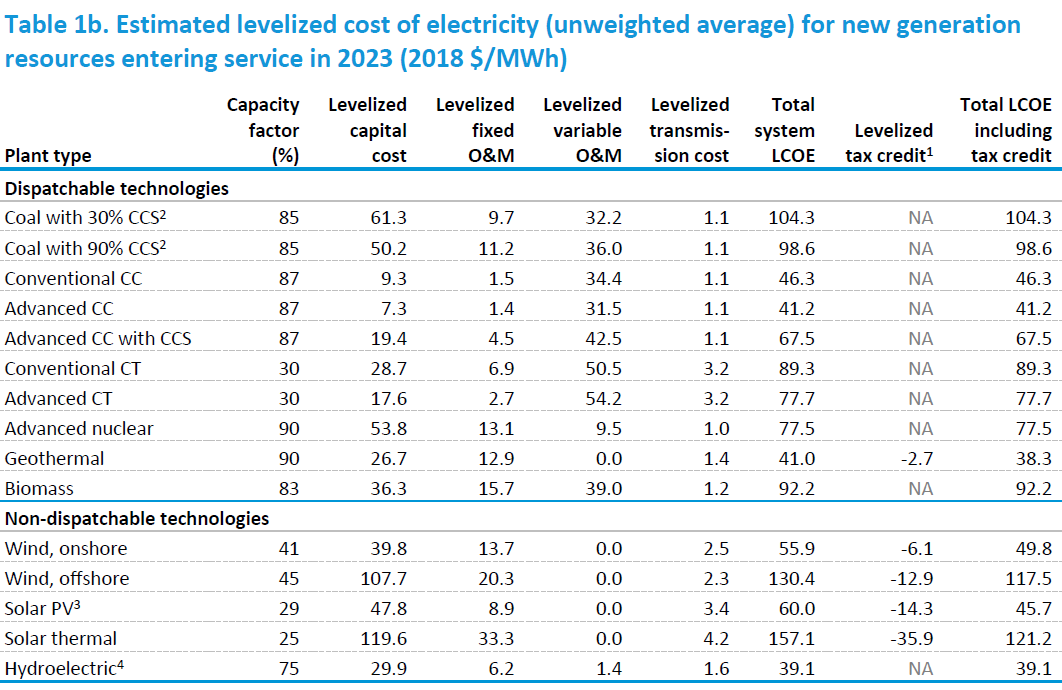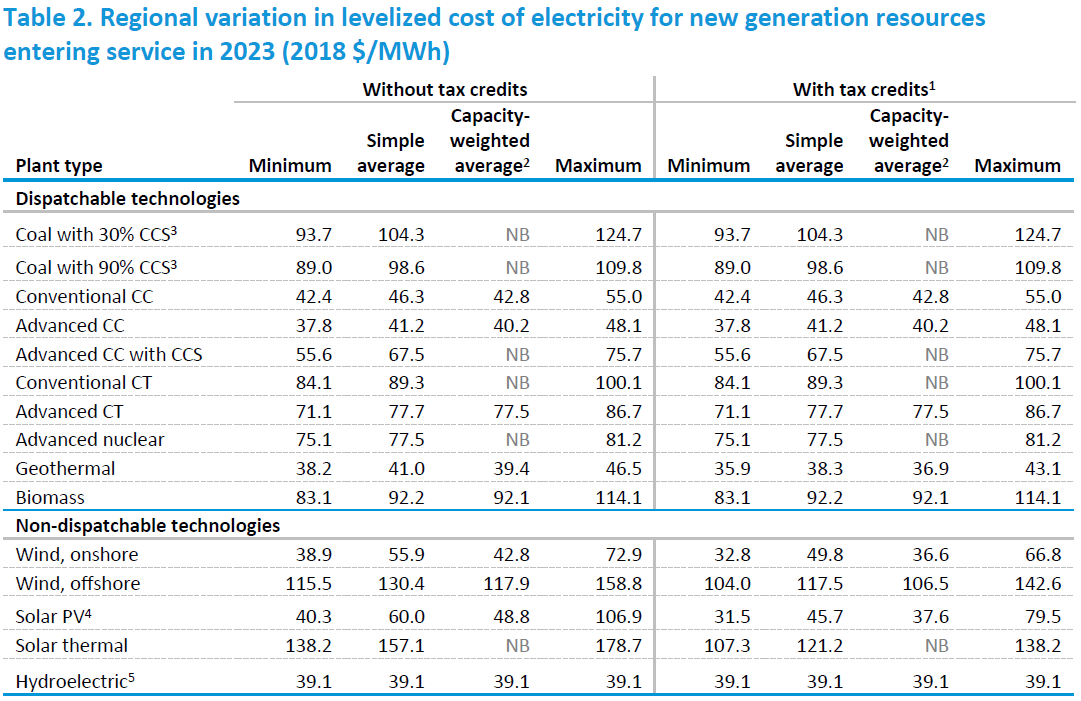It depends what costs are factored into the generation. If one looks at adding in say carbon capture and storage, fossil fuels are on par with nuclear.
The US government has also looked in detail at Levelized Cost and Levelized Avoided Cost of New Generation and it found in 2023 with including CCS and also existing subsidies to renewables, the following:
and
The US figures, while may be slightly different to that in Australia due a number of factors including weather, labor costs, development costs, network connection costs etc, it gives an idea of more current (2019) comparative costs compared to that which has been done by the CSIRO (2017).
That is correct and usually additional costs associated with maintaining reliability and stability of the network are not often considered, as they are external to the pure generation costs and usually attached to a network cost.
It is also worth noting that renewables also require ongoing/continuous maintenance. For example, keeping reflector mirrors/PV panel glass clean in the case of solar or regular inspection and servicing in the case of wind.
It is also suggested that there will be additional capacity required for renewables due to the variable nature of the generation. During high generation times, this additional capacity will push prices down (as generation will exceed demand), but in low generation times, the costs would be very high and potentially at the AER ceiling price. If additional and diverse capacity is introduced to increase generation when renewable generation is at a low, this will create additional redundancy which will significantly impact on the cost of the renewable generation. The solution to avoid this is to introduce mass storage like pumped hydro and the SA battery packs. Both are not cheap solutions and may ultimately there may be a bit of additional built in redundancy with storage.
For example, the SA Telsa battery cost $90M to support the network (cost to SA taxpayer is about 4-$5M/year). There have been reports that this battery will ‘provide 30000 homes with about an hour of electricity’. As there are about 9 million residences, the costs for battery support becomes very expensive (say capital cost of $27B for 1 hours power for dwellings only - commercial nor industry included). Once commercial and industrial use, as well as increased demand through higher use of electricity to replace traditional fossil fuels, as well as having sufficient capacity to ensure that the network operates under most conditions, the cost is very high.
It is worth also noting that the $27B would allow the construction of multiple traditional fossil type generators or several nuclear reactors.
At the end of the day, noting will come cheaply and Australian’s will need to pay for the option taken in the future. Any path Australia goes down will also potentially be locked in for 25-50+ years (which is the expected life of many replacement technologies).
I also agree. If the comment was about a highly diverse and spread small scale electricity generation system which is operated (automatically) to meet network demand, this is a highly complex system which will come at enormous cost. While in theory it sounds like a great solution and potentially has advantages, there are also many disadvantages and constraints which would need to be overcome.

